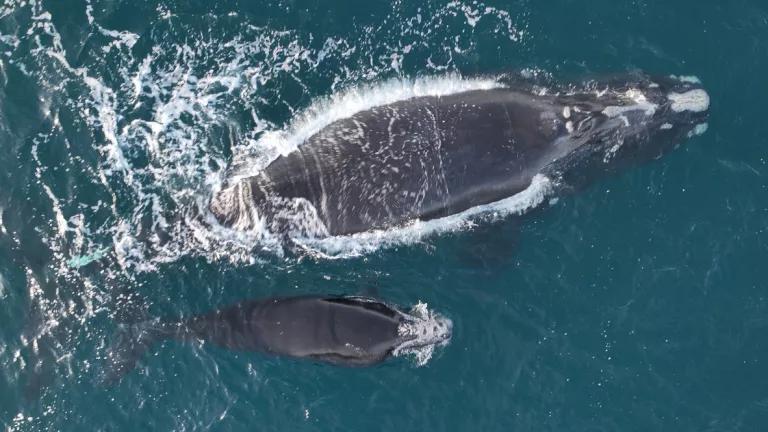Strengthening Our National Marine Sanctuary System
More than two dozen environmental organizations are urging President Biden to save America’s unique marine parks.

On the eve of the National Marine Sanctuary System’s 50th anniversary, more than two dozen environmental organizations are urging President Biden to save America’s unique marine parks.
Half a century ago, Congress established the National Marine Sanctuary System to designate and safeguard marine areas with special ecological, cultural, and historical significance as national marine sanctuaries. Today, the National Oceanic and Atmospheric Administration (NOAA) oversees more than 620,000 square miles of ocean and Great Lakes waters in a diverse system of 15 sanctuaries and two national monuments. From the Florida Keys to Stellwagen Bank to Monterey Bay, the National Marine Sanctuary System celebrates America’s aquatic and ocean heritage.
However, our sanctuary system is struggling. Sanctuary condition reports reveal many sanctuary resources – including wildlife, habitat, and water quality – are in poor or declining condition. Recent analysis of available condition reports for 14 national marine sanctuaries found that 37 percent of the sanctuaries’ resource conditions were classified as fair, fair/poor, or poor, indicating they were experiencing “either measurable, widespread, persistent, and/or severe impacts” and that 41 percent of sanctuary condition report trends were “declining.”
Environmental organizations from across the U.S., collectively representing millions of members, are calling on the administration to revive our national marine sanctuaries’ failing health. In the face of twin biodiversity and climate crises, we must modernize the sanctuary program to match the increased severity of threats facing our ocean and Great Lakes habitats and wildlife. We need these special marine areas to truly be sanctuaries and thrive far into the future.
As areas held in trust for the American people, NOAA must act now to save our sanctuaries. National marine sanctuary regulations should be strengthened to:
- Require regular sanctuary condition reports so that we can keep consistent watch on sanctuary health.
- Require that sanctuary management plans meaningfully address the condition reports’ identified threats to sanctuary health.
- Provide sanctuary managers with the authority to manage activities within sanctuaries that jeopardize the health of sanctuary resources.
- Adopt a whole-of-NOAA approach and require effective coordination with other agencies impacting sanctuary resources so that all of government helps support, protect, and restore sanctuaries.
Improvements to the sanctuary program must also ensure the dismantling of discriminatory boundaries that have prevented under-represented communities and Tribes from meaningfully engaging in sanctuary designation and management. Many actions – from funding and technical assistance to increased access of all kinds (physical, cultural, language obstacles) – should be made available so that these special places are truly enjoyed by all.
With climate change rapidly altering marine ecosystems, sanctuaries can also serve as living laboratories to understand the impacts stemming from climate change and human activity. NOAA should consider designating portions of the sanctuaries as scientific reserves during management plan development or revision. Establishing sanctuary areas free from all extractive and destructive activities would allow scientists to better assess the impacts from climate and ocean activities—as well as the resilience benefits that highly protected sites offer.

Support for strong sanctuary protections exists. Recent polling shows eighty percent of Americans favor of protecting marine areas with environmental, educational, or cultural importance. Americans want marine protected areas to conserve ocean wildlife and habitats, and overwhelmingly favor exclusion of oil and gas drilling (70%), commercial fishing (69%), or mining (65%) from these places.
Stronger protections for our National Marine Sanctuary System are vital to reaching the administration’s America the Beautiful goals of tackling biodiversity loss, mitigating impacts of climate change, and increasing equitable access to nature. The Biden Administration should meet the challenges of the moment by taking steps to build a stronger, more resilient National Marine Sanctuaries Program that protects these areas for generations.




